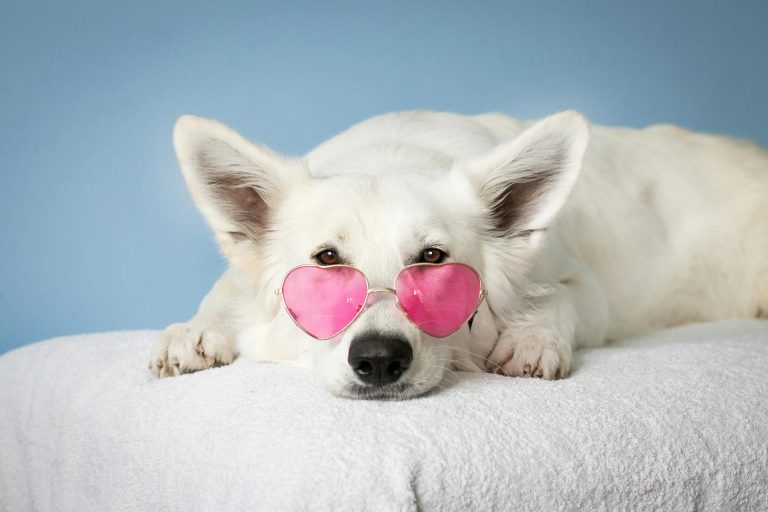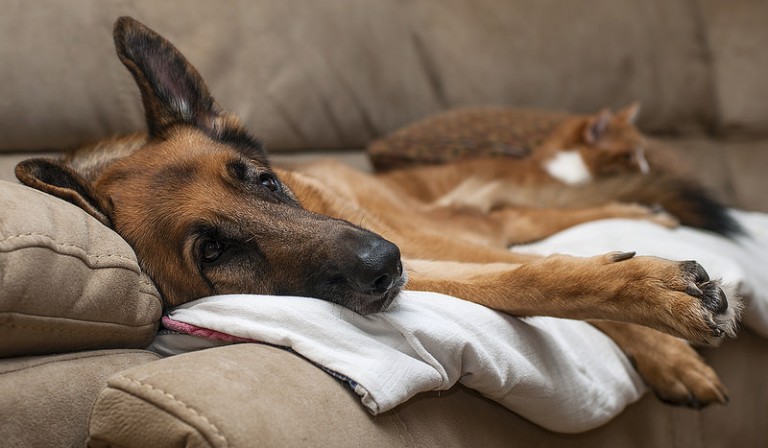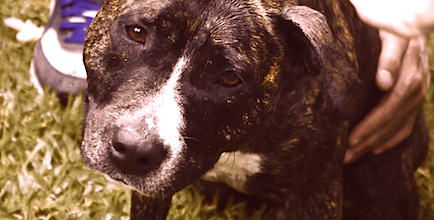Understanding Cataracts in Dogs: Symptoms, Treatment, and Prevention
Learn about cataracts in dogs, including symptoms, treatment options, and prevention tips to help keep your dog’s vision clear.
This pet health content was written by a veterinarian, Dr. Pippa Elliott, BVMS, MRCVS. It was last reviewed on August 19, 2024
If you have questions or concerns, call your vet, who is best equipped to ensure the health and well-being of your pet. This article is for informational purposes only and is not a substitute for professional medical advice, diagnosis, or treatment. See additional information.
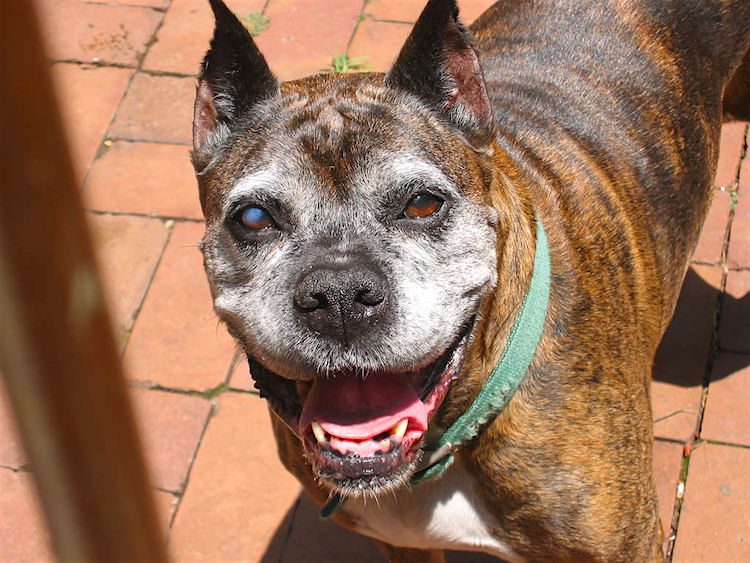
- Understanding Cataracts in Dogs
- What Is a Dog Cataract?
- Treatment Options for Cataracts in Dogs
- Do Cataract Eye Drops for Dogs Work?
- Exploring Alternative Treatments for Cataracts in Dogs
- Dog Cataract Surgery: The Gold Standard
- How to Know If Your Dog Has Cataracts
- Cloudy Eyes in Dogs: Is It Always a Cataract?
- Can a Dog Live With Cataracts?
- What to Do About Dog Cataracts
- Long-Term Management of Dogs with Cataracts
- Advancements in Cataract Surgery for Dogs
- Frequently Asked Questions (FAQ)
- References

Don’t leave your pet’s safety to chance
Sign up for Petful recall alerts today.

Understanding Cataracts in Dogs
Cataracts in dogs are a common cause of blindness. You might notice them without even realizing it—those dogs often have milky white pupils instead of black. Cataracts lead to loss of vision, so understanding your options is crucial.
- Recognizing cataracts in dogs is important because early detection can lead to better outcomes.
- Symptoms include cloudy eyes and changes in vision.
This article provides a clear picture of cataracts in dogs, answering common questions such as:
- How do you know if your dog has cataracts?
- Do eye drops work?
- What about surgery?
- Can a dog live with cataracts?
If your dog has a cloudy eye, it’s essential to see a vet right away. Cataracts are just one of many dog eye problems, and your dog’s eyesight could depend on prompt and correct treatment.
What Is a Dog Cataract?
Cataracts in dogs affect the lens within the eye, causing it to become cloudy. The lens, located just behind the iris, focuses light onto the retina. It’s made up of clear cells aligned to allow light to pass through cleanly. However, when proteins within these cells stick together, a cataract forms, blocking light as if it were passing through a dirty window.
- Dog cataracts can occur in both young and old dogs.
- In puppies, cataracts are often genetic, leading to juvenile cataracts.
- In older dogs, cataracts may develop due to age, wear and tear, or health issues like diabetes.
If your dog has cataracts, you might wonder: Is blindness inevitable, or are there effective treatments available?
Treatment Options for Cataracts in Dogs
When it comes to treating cataracts in dogs, here are the key points:
- Control any underlying health problems.
- Consider cataract surgery as the gold standard.
- Eye drops: Are they effective?
For dog eye problems related to health conditions like diabetes, controlling the underlying issue is crucial. While stabilizing diabetes won’t reverse an existing cataract, it can slow its progression.
The gold standard for treating cataracts in dogs is surgery, specifically a technique called phacoemulsification. However, this procedure is costly, leading some to explore other options, such as eye drops. Unfortunately, no non-surgical treatment has been scientifically proven to work. Despite the allure of promising solutions found through a quick internet search, the reality may differ. anyone doing a quick internet search can find what looks superficially to be promising options. But what is the truth?
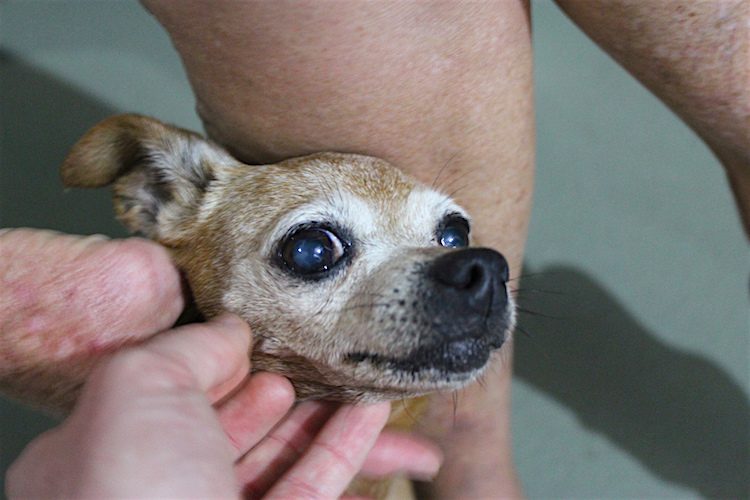
Do Cataract Eye Drops for Dogs Work?
Surgery for cataracts in dogs can be expensive and carries some risk. If the cost is prohibitive, you may wonder whether there are non-surgical treatment options for dog cataracts. Let’s explore some of these options that have been creating a buzz on the internet.
- Lanosterol: Currently being researched for use in people with cataracts, lanosterol may offer an exciting alternative for those without access to surgical facilities. This compound works by reducing the protein aggregation within the lens, which is the cause of cataracts. However, while the research is promising, the exact mechanism by which lanosterol detangles these sticky proteins remains unclear.
The Challenges of Lanosterol in Real-Life
Despite promising research, there’s a significant gap between lab results and real-life applications:
- Most research on lanosterol has been conducted on lenses in Petri dishes, not in live animals.
- Eye drops must travel through the cornea and anterior chamber to reach the lens capsule, a process that may hinder the effectiveness of lanosterol.
- Initial studies suggest that lanosterol eye drops might not effectively reach the target area, raising questions about their overall effectiveness and value.
Potential Breakthroughs and Concerns
Researchers are exploring better delivery systems, and one company, Lanomax, claims to have made progress:
- Lanomax has developed a nanotechnology product called Thru Delivery, designed to address the delivery challenges without needing injections.
- However, there’s still not enough evidence to recommend lanosterol-based eye drops for treating cataracts in dogs.
When considering similar products like LumenPro, it’s crucial to read labels carefully:
- These products often use phrases like “support for pets suffering from cataracts” rather than making definitive claims about dissolving cataracts.
- Guarantees focus more on “comfort” and “happiness” rather than clear vision.
- Key Takeaway: Before considering non-surgical treatments like eye drops, weigh the evidence carefully and consult with your veterinarian to avoid potential risks.

Exploring Alternative Treatments for Cataracts in Dogs
When it comes to treating cataracts in dogs, several alternative options are available, though their effectiveness is often debated.
- N-alpha-acetyl Carnosine (NAC): Marketed as Can-C, NAC is touted as a powerful antioxidant that might reduce the protein cross-linking that causes cataracts. While one human study seemed to support this claim, the research has faced criticism for its methodology, and subsequent attempts to replicate the results have failed. In short, there is no validated scientific evidence that NAC works, but for those who can’t afford surgery, it might be worth trying at their own risk.
- Ocu-Glow: Ocu-Glow is another option, marketed as a vision supplement taken orally and often recommended by veterinary ophthalmologists. It’s best thought of as a nutraceutical for eye health, similar to how Yumove supports joint health. While it contains antioxidants that promote good ocular health, it isn’t a cure for cataracts. Ocu-Glow can help maintain eye health but doesn’t claim to clear cataracts in dogs.
Dog Cataract Surgery: The Gold Standard
For those seeking to restore their dog’s vision, cataract surgery remains the gold standard. The procedure, known as phacoemulsification, involves:
- Placing a special probe directly into the lens through a small incision in the cornea.
- Using high-frequency ultrasound waves to break down the lens.
- Flushing out and suctioning up the fragments through the probe.
- Implanting a replacement lens to give the dog the best vision possible.
This surgery is most successful for early-stage cataracts, as mature cataracts can be too brittle to break down effectively. However, there are challenges, including the need for general anesthesia, which may be difficult for elderly or infirm dogs to handle. Additionally, there are potential post-operative complications such as infection, uveitis, or glaucoma.
How to Know If Your Dog Has Cataracts
Wondering if your dog has cataracts? Here’s how to check:
- In good light, look into your dog’s eyes.
- Focus beyond the clear, shiny surface (cornea) and look behind the iris (the colored part of the eye) where the lens sits.
- A healthy lens is clear, so it’s not easily visible. An abnormal lens, on the other hand, appears cloudy with a white, pale blue, or milky-looking surface.
Top Tip: Take a flash photo of your dog’s face. Normally, you’d expect to see the “red eye” effect, but cataracts block light from reaching the retina, preventing this phenomenon. If your dog’s eyes appear milky instead of red in photos, it could be a sign of cataracts.
Learn more from the veterinarian in this video:
Cloudy Eyes in Dogs: Is It Always a Cataract?
When you notice cloudy eyes in dogs, it’s important to remember that cataracts aren’t the only cause.
- Sometimes, the cloudiness might be in the cornea (the front “window”) rather than the lens. This is why it’s essential to visit the vet — conditions like eye ulcers or even glaucoma can cause similar bluing.
- Even if you correctly identify a misty lens, it’s not always a cataract. Another condition can mimic cataracts, appearing similar to the naked eye, but this condition is merely an age-related change and doesn’t interfere with vision.
Your vet can differentiate between the two by using an ophthalmoscope. If they can see through the lens to the retina behind it, it’s likely just an age-related change rather than a true cataract.
Can a Dog Live With Cataracts?
For most dogs, cataracts aren’t painful but rather a nuisance.
- Imagine wearing dark sunglasses indoors at night with the lights off — no light reaches the retina. The denser the cataract, the less light gets through, eventually leading to blindness.
- Despite this, most blind dogs cope with life “very well indeed.”
However, there are some cases where dog cataracts can cause problems:
- A mature (aged) cataract is brittle and can sometimes break free, float within the eye, or even burst, releasing proteins.
- These scenarios can lead to complications such as glaucoma or uveitis, which are painful. Ideally, the cataract should be treated before it becomes stiff and brittle.
What to Do About Dog Cataracts
Whatever treatment option you choose, it’s essential to start preparing your dog for potential vision loss.
- Sensory cues: Help your dog learn to navigate by feel, sound, and smell, not just vision.
- Place different textured rugs at the threshold of each room, so your dog associates the texture with a specific location.
- Use different scented potpourri in each room to help your dog identify where they are.
- Hang a wind chime by the back door to help your dog locate it.
- Tune radios to different stations (talk, music, country) in various rooms.
By implementing these changes, you can help your dog feel safe and secure navigating around the house, even if their vision deteriorates.
Long-Term Management of Dogs with Cataracts
Long-term management of cataracts in dogs involves regular veterinary check-ups and careful monitoring of your dog’s vision. Since cataracts in dogs can progress at varying rates, it’s essential to maintain a consistent schedule with your vet to assess the condition of your dog’s eyes and overall health.
Incorporating a diet rich in antioxidants can support eye health and potentially slow the progression of cataracts. Supplements like Ocu-Glow, which contain antioxidants, may be recommended by your vet to help maintain eye health. For dogs that are not candidates for cataract surgery, adapting the home environment to accommodate vision loss is crucial.
- Utilize sensory cues such as textured rugs, scented potpourri, and sound markers to help your dog navigate safely.
- Consistent training and reinforcement of verbal cues can also assist dogs in adapting to their changing vision, helping them lead a comfortable and secure life despite cataracts.
Advancements in Cataract Surgery for Dogs
Cataract surgery for dogs, particularly the procedure known as phacoemulsification, has seen significant advancements in recent years. This procedure remains the gold standard for restoring vision in dogs with cataracts, and innovations in surgical techniques and equipment have greatly improved the success rate.
Veterinary ophthalmologists now have access to more precise tools and methods, which result in better outcomes for dogs undergoing cataract surgery. These advancements include:
- Improved phacoemulsification machines that more effectively break down and remove the cloudy lens, reducing the risk of complications.
- Enhanced anesthesia protocols that are safer for dogs, particularly those that are elderly or have underlying health issues.
- The development of better intraocular lens implants, which provide clearer vision post-surgery and improve long-term outcomes for dogs with cataracts.
For owners considering cataract surgery for their dogs, these advancements offer renewed hope for restoring their pet’s vision and quality of life.
Frequently Asked Questions (FAQ)
What causes cataracts in dogs?
Cataracts in dogs are primarily caused by genetics, age, diabetes, and trauma to the eye.
What do cataracts look like in dogs?
Cataracts in dogs appear as a cloudy or milky white film over the eye, often affecting the lens.
How to prevent cataracts in dogs?
Prevent cataracts in dogs by maintaining regular vet check-ups, controlling diabetes, and providing a healthy diet rich in antioxidants.
How to treat cataracts in dogs?
Cataracts in dogs are typically treated with surgery, although some supplements may help slow progression.
References
- Zhao, Ling et al. “Lanosterol Reverses Protein Aggregation in Cataracts.” Nature 523 (July 30, 2015): 607–611. https://www.nature.com/articles/nature14650.
- Lanomax. https://www.lanomax.com/.
- Shen, X. et al. “Lanosterol Synthase Pathway Alleviates Lens Opacity in Age-Related Cortical Cataract.” Journal of Ophthalmology (July 11, 2018). https://pubmed.ncbi.nlm.nih.gov/30116630/.
- Kaur, Simerdip. “The Truth Behind the Headlines.” Eye News 24, no. 6 (April/May 2018). https://www.eyenews.uk.com/education/the-truth-behind-the-headlines/post/the-truth-behind-the-headlines-aprmay-2018.
- Babizhayev, M.A. et al. “Efficacy of N-Acetylcarnosine in the Treatment of Cataracts.” Drugs in R&D 3, no. 2 (2002): 87–103.



